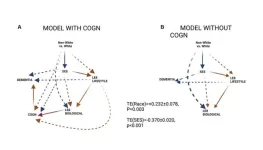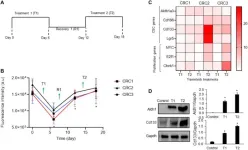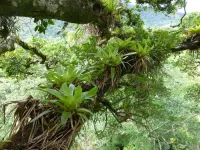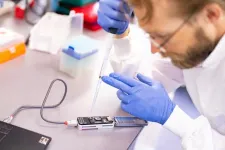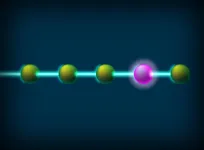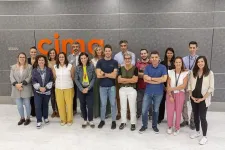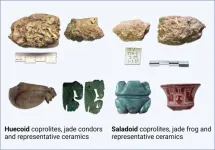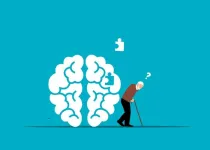(Press-News.org) The National Science Foundation is funding a $13.9 million program led by the University of Alaska Fairbanks to help multiple communities respond to coastal erosion, flooding, permafrost thaw and other hazards attributed to climate change.
The four years of funding is part of the foundation’s Navigating the New Arctic program.
The funding supports AC³TION, a project led by the Alaska Coastal Cooperative at UAF in collaboration with the rural coastal communities, Arizona State University, the University of Northern Iowa and the University of Texas El Paso.
The group’s acronym stands for Alaska Coastal Cooperative for Co-producing Transformative Ideas and Opportunities in the North.
“This award is a culmination of years of hard work and effort by many people at UAF and beyond, including our community and institution partners,” Alaska Coastal Cooperative Director Chris Maio said. “It really is an amazing group of experts that we’ve brought together to contribute toward resilient coastal communities in the Arctic.”
Maio is also director of the UAF Geophysical Institute’s Arctic Coastal Geoscience Lab. He is also affiliated with the UAF College of Natural Science and Mathematics.
“To effectively respond to a rapidly changing Arctic, this project will develop and implement an innovative approach to resilience action that identifies community priorities, advances applied convergence science and improves communication and synergy across multiple stakeholder groups,” Maio said.
The participating communities are on Alaska’s west and southwest coasts, on the Aleutian Islands, in the Bering Sea and on the Beaufort Sea coast of Canada’s Northwest Territories: Point Lay, Gambell, Hooper Bay, St. Paul Island, Nelson Lagoon, Atka and the Chignik Intertribal Coalition, which includes Chignik Lake, Chignik Lagoon, Chignik Bay, Ivanof Bay and Perryville. The project also includes the community of Tuktoyaktuk in Canada.
Among the project’s tasks:
• Identify community priorities for projecting coastal hazard risks.
• Identify community needs to adapt infrastructure, including communication systems.
• Integrate local knowledge with multi-level governance processes to allow for an effective response to a rapidly changing Arctic.
• Deploy a series of ocean moorings, wave buoys and water-level gauges across western Alaska to provide critical data for the modeling and assessment of current and projected coastal hazards and impacts.
• Document household level impacts of multifaceted change on health and wellbeing.
• Increase knowledge exchange among communities and among scientists and community residents through various efforts.
The project will also include two science cruises aboard the research vessel Sikuliaq, owned by the National Science Foundation but operated by the UAF College of Fisheries and Ocean Sciences. The ship’s homeport is Seward, Alaska.
Lucy Apatiki, president of the Native Village of Gambell, said her community on St. Lawrence Island in the Bering Sea appreciates being involved as a co-producer in the groundbreaking research.
“The data collected will be beneficial to address some of the impacts of the ever-changing climate we face,” she said. “And the early warning system in place will alert us, saving lives and property.”
Associate professor Shauna BurnSilver of Arizona State University’s School of Human Evolution and Social Change said the project’s backbone is its commitment to knowledge cogeneration.
“Well-resourced community partners, a network of community research leads, coastal monitoring, multilevel governance, it’s all there,” she said. “But what will make AC³TION truly powerful is following a process for cogeneration of knowledge that is thoughtful, grounded in relationships and equity and learns from all the work that has come before.”
The collaborators held many in-person meetings and had three years of back-and-forth discussions to develop the project’s research questions, objectives and activities. The collaborative relationships with communities existed from other work, so the relationships are strong at the outset of this project.
“This is an amazing opportunity for Western science and Indigenous knowledge bearers to exchange knowledge, create relationships and work toward a healthier future for all the lands, waters and personnel involved,” said Casey Ferguson, the Alaska Coastal Cooperative’s Indigenous community coordinator.
Andrey Petrov, director of the Arctic, Remote and Cold Territories Interdisciplinary Center at the University of Northern Iowa, said the project’s structure will ensure that “results are well-attuned to the most urgent needs of Arctic residents.”
Matthew Balazs, Alaska Coastal Cooperative deputy director, said the relationships among those involved are key.
“The existing relationships and trust that have been built up between the communities and research groups over the years are the cornerstones on which this project was built and are essential components needed for our long-term success,” he said.
“AC³TION embodies the spirit of the Alaska Coastal Cooperative’s mission and goals. While the project will run for four years, our intent is to leverage the successes and lessons learned to ensure the ACC will continue this critical work well into the future.”
Research assistant professor Katie Spellman of the UAF International Arctic Research Center and research assistant professor Tobias Schwoerer of the University of Alaska Anchorage are also involved in the project.
CONTACTS:
• Chris Maio, Arctic Coastal Geoscience Lab, 907- 474-5651, cvmaio@alaska.edu
• Shauna BurnSilver, Arizona State University, sburnsil@asu.edu
• Casey Ferguson, cfergu23@alaska.edu.
• Rod Boyce, University of Alaska Fairbanks Geophysical Institute, 907-474-7185, rcboyce@alaska.edu
END
Group led by University of Alaska Fairbanks gets $13.9 million to aid coastal climate resilience
2023-10-11
ELSE PRESS RELEASES FROM THIS DATE:
New study finds link between subjective and objective memory decline
2023-10-11
MINNEAPOLIS – Among people who report memory and thinking problems, some show no signs of a problem on standard tests, while others have subtle declines on their tests. A new study shows that people who have subtle problems with these tests may have an increased risk of developing mild cognitive impairment, which can be a precursor to dementia. The study is published in the October 11, 2023, online issue of Neurology®, the medical journal of the American Academy of Neurology.
“Several studies have found that people with subjective ...
New guidance issued on the determination of brain death
2023-10-11
MINNEAPOLIS – New guidance has been issued for clinicians on the determination of brain death, also known as death by neurologic criteria. A new consensus practice guideline, developed through a collaboration between the American Academy of Neurology (AAN), the American Academy of Pediatrics (AAP), the Child Neurology Society (CNS), and the Society of Critical Care Medicine (SCCM) is published in the October 11, 2023, online issue of Neurology®, the medical journal of the American Academy of Neurology.
This guideline updates the 2010 AAN ...
Insights on disparities in dementia from the UK Biobank study
2023-10-11
“The present study is among few to examine racial/ethnic disparities in dementia risk and their related pathways [...]. It is the first to do so in a UK population.”
BUFFALO, NY- October 11, 2023 – A new research paper was published in Aging (listed by MEDLINE/PubMed as "Aging (Albany NY)" and "Aging-US" by Web of Science) Volume 15, Issue 18, entitled, “Pathways explaining racial/ethnic and socio-economic disparities in dementia incidence: the UK Biobank study.”
Pathways explaining racial/ethnic disparities ...
Suppression of cancer stemness and drug resistance via BRAF/EGFR/MEK inhibition in colorectal cancer cells
2023-10-11
“[...] our approach enables mechanistic studies of drug resistance with 3D cultures of primary cancer cells to develop and test treatments that suppress cancer [...].”
BUFFALO, NY- October 11, 2023 – A new research paper was published in Oncotarget's Volume 14 on October 4, 2023, entitled, “Inhibiting BRAF/EGFR/MEK suppresses cancer stemness and drug resistance of primary colorectal cancer cells.”
Drug resistance is a major barrier against successful treatments of cancer patients. Gain of stemness under drug pressure is a major mechanism that renders treatments ineffective. Identifying ...
Epiphytes, amazing plants like moss and bromeliads found in trees, face growing threats
2023-10-11
Orchids, mosses, ferns—or epiphytes, defined as nonparasitic plants that grow on other plants—are crucial for Earth’s biodiversity and play essential roles in forests around the world, building habitat in trees for myriad other life forms, from bacteria and insects to birds and reptiles.
However, the very attributes that have enabled epiphytes to thrive in forest canopies are now making them vulnerable to both natural and human-caused disturbances, according to Nalini Nadkarni, the University of Utah biologist renowned for her pioneering work studying and conserving treetop ecosystems.
In a study published this month, Nadkarni found these vital plants ...
AI speeds up identification brain tumor type
2023-10-11
What type of brain tumor does this patient have? AI technology helps to determine this as early as during surgery, within 1.5 hours. This process normally takes a week. The new technology allows neurosurgeons to adjust their surgical strategies on the spot. Today, researchers from UMC Utrecht and researchers, pathologists and neurosurgeons from the Princess Máxima Center for pediatric oncology and Amsterdam UMC have published about this study in Nature.
Every year, 1,400 adults and 150 children are diagnosed with a tumor in the brain or spinal cord in the Netherlands. Surgery is often the ...
A new way to erase quantum computer errors
2023-10-11
Quantum computers of the future hold promise in solving all sorts of problems. For example, they could lead to more sustainable materials, new medicines, and even crack the hardest problems in fundamental physics. But compared to classical computers in use today, rudimentary quantum computers are more prone to errors. Wouldn't it be nice if researchers could just take out a special quantum eraser and get rid of the mistakes?
Reporting in the journal Nature, a group of researchers led by Caltech is among the first to demonstrate a type of quantum eraser. The physicists show that they can pinpoint and correct for mistakes in quantum computing ...
Blocking an immune molecule reduces tumor growth and prolongs survival in animal models of the most aggressive childhood cancer
2023-10-11
Researchers from Cima and the Clínica Universidad de Navarra, together with the international cooperative group Diffuse Midline Glioma (DMG-ACT), have confirmed that blocking an immune checkpoint molecule reduces the tumor and prolongs survival in animal models of the most aggressive childhood cancer. This research, carried out at the Cancer Center Clínica Universidad de Navarra, shows that inhibition of TIM-3 promotes the immune memory of diffuse intrinsic stem glioma (DIPG) and improves the prognosis of the disease.
DIPG is an aggressive brain stem tumor and the leading cause of death related to pediatric cancer. Due to its location therapeutic ...
Mummified poop reveals pre-Columbian cultures of the Caribbean consumed a diversity of plants, with peanuts, papaya, maize, and even cotton and tobacco detected
2023-10-11
DNA analysis of mummified poop reveals two pre-Columbian Caribbean cultures ate a wide variety of plants, like maize, sweet potato, and peanuts—and tobacco and cotton traces were detected too, according to a study published October 11, 2023 in the open-access journal PLOS ONE by Jelissa Reynoso-García from the University of Puerto Rico, Puerto Rico, and colleagues.
Mummified poop, or coprolites, can reveal clues to diet and lifestyle. In this study, Reynoso-García and colleagues analyzed plant DNA isolated from coprolites sampled from archeological sites of two pre-Columbian cultures (Huecoid and Saladoid) to see what these peoples ate ...
Risk factors for dementia vary by ethnicity, study finds
2023-10-11
Modifiable risk factors—including hypertension, obesity, diabetes, low HDL cholesterol and sleep disorders—confer a higher risk of dementia for people in some minority ethnic groups compared to White people, according to a new study published this week in the open-access journal PLOS ONE by Naaheed Mukadam of University College London, UK, and colleagues.
The number of people with dementia is on the rise around the world. There has been increasing interest in potentially modifiable risk factors, ...
